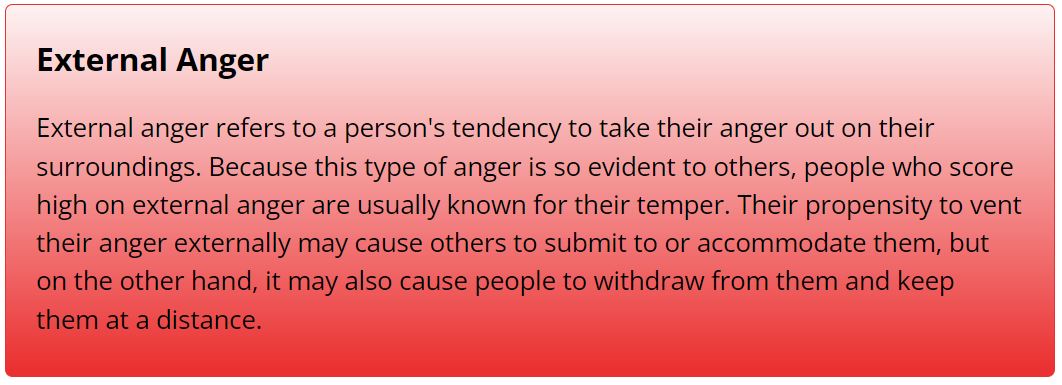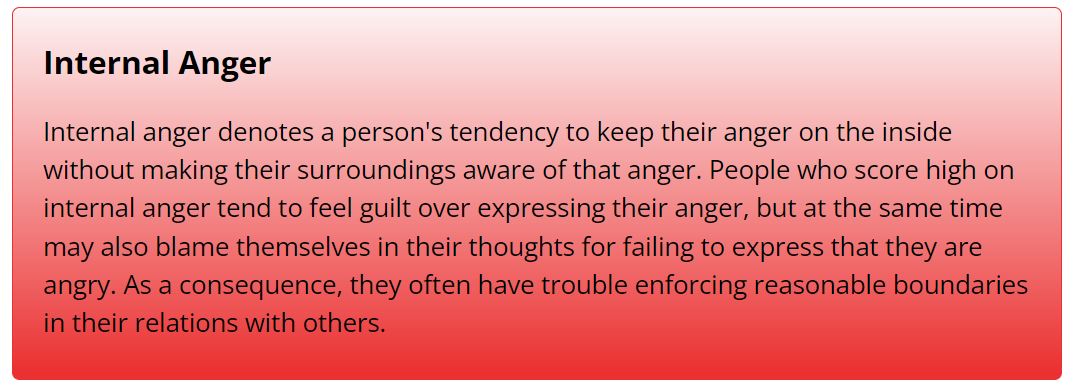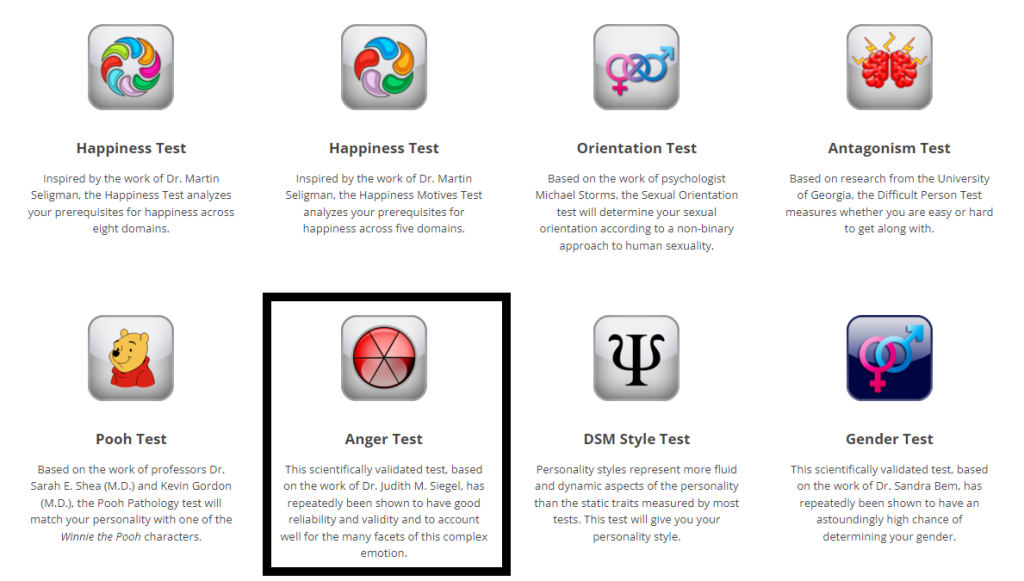To grow as a person and achieve your goals, you must first know and understand yourself, your feelings and your character. As unusual as it is, many are now turning to social media to learn more about their personality. This is why the “Multidimensional Anger Test” is trending on TikTok lately.
Thousands of TikTok users are sharing videos of their anger test results under the #angertest or #mentalhealth, and some of them are getting hundreds of thousands of views for it.
Many are finding it fun and interesting to gauge their susceptibility to anger while it’s entertaining for outsiders to peek into how other people’s results turned out.
- What is the multidimensional anger test?
- What is the TikTok anger test called?
- How do you get anger tested?
- Is an anger test accurate?
These are the questions most people ask about, and this article will answer all of them.
- What is the Multidimensional Anger Test?
- TikTok Anger Test: 6 Facets of the Multidimensional Anger Test
- Is the Multidimensional Anger Test Accurate?
- Benefits of Taking the Multidimensional Anger Test?
- What are the Risks of Taking the Multidimensional Anger Test?
- TikTok’s Multidimensional Anger Test: How To Take It?
- What are the Types of Anger?
- What are the Warning Signs of Anger?
- What are the Benefits of Anger Management?
What is the Multidimensional Anger Test?
A multidimensional anger test is a useful tool for measuring an individual’s level of anger. This test is based on Dr. Judith M Siegel’s work and has been proven to be reliable and valid.
The original test was developed in 1986 to asses several dimensions of anger which include frequency, duration, expression, magnitude, hostility and range of anger-inducing situations. This was conducted to better understand the connection between coronary disease and anger.
Note that the popular anger test or anger issues test on TikTok wasn’t created by Dr. Siegel but it was influenced by her work.
What is the TikTok Anger Test Called?
Though there are many anger tests available, the TikTok anger test is a test put together by IDRLABS.
It can be used to help determine whether an individual is at risk for developing problems with anger or aggression. The test is also useful in assessing how well an individual is able to cope with and manage their own angry feelings
The multidimensional anger test has three main components: the Anger Expression Scale, the Coping skills scale and the Anger Arousal scale.
The Anger Expression Scale measures how well an individual is able to express their anger in a constructive way. This includes both verbal and physical expressions of anger. Individuals who score high on this scale are typically able to effectively communicate their anger in a way that does not escalate the situation or cause harm to others.
The Coping skills scale measures an individual’s ability to cope with and manage their own angry feelings. Individuals who score high on this scale typically have good coping skills and are able to manage their own anger effectively.
The Anger Arousal scale measures how easily an individual becomes angered. Individuals who score high on this scale tend to be more easily angered and may be more likely to lash out in an aggressive manner.
The anger test can be a valuable tool for individuals who want to evaluate their anger or those who want to learn how to handle situations that make them angry. It can help to identify areas in which an individual needs to improve in order to better manage their anger. The test can also be used to assess whether an individual is at risk for developing problems with anger or aggression. If an individual scores high on the Anger Arousal scale, it may be beneficial for them to seek professional help in order to learn how to manage their anger better.
TikTok Anger Test: 6 Facets of the Multidimensional Anger Test
After taking the test, you’re going to be moving on to the results. The results show the six facets of anger and how you fare on them compared to the population average.
Anger Arousal
This shows the frequency, duration and magnitude of a person’s anger. The higher the person scores, the quicker they are to switch from their normal state to the state of anger.

Anger Spectrum
This refers to the scope of situations that can trigger the anger of the person. The higher the person scores in this spectrum, the more situations can trigger their anger and the easier it is for their frustrations to lead to a state of anger.
This facet only shows the range of situations and not the intensity of the person’s anger.

Hostile Outlook
This determines how high a person’s hostility and cynicism are. This facet shows how much a person distrusts other people. A hostile outlook doesn’t necessarily mean that the person experiences anger emotions, but more of anger cognitions.

External Anger
This refers to a person’s potential to take their anger out on external factors. People who score high on this are mostly those who are known for their temper.

Internal Anger
Unlike external anger, internal anger refers to a person’s tendency to not make other people aware of their anger because they tend to keep it inside. People who score high in this category often feel guilt over expressing their anger.

In terms of the overall score, the higher scores will mean that the person has greater problems when it comes to anger.
Is the Multidimensional Anger Test Accurate?
The multidimensional anger test is a reliable and valid measure of an individual’s level of anger. The test has been shown to be effective in assessing both verbal and physical expressions of anger. It is also effective in assessing an individual’s ability to cope with and manage their own angry feelings.
It is a good starting point, but like most free online tests, it’s not wise to rely on it. There is still the fact that there are people who struggle to accept their behavior or might be in denial which will make the results inaccurate.
Mental health is very important and it’s a huge leap that more people are being open to talking about it and understanding it. Talking to a licensed professional is the best way to understand and handle emotions like anger.
The multidimensional anger test becoming popular on TikTok has encouraged many people to take it themselves, but don’t take it to heart. If you don’t like your results, then talk to someone may it be a close friend, family member or mental health professional.
Benefits of Taking the Multidimensional Anger Test?
The multidimensional anger test can be helpful in identifying areas in which an individual needs to improve in order to better manage their anger.
The test can also be used to assess whether an individual is at risk for developing problems with anger or aggression. If an individual scores high on the Anger Arousal scale, it may be beneficial for them to seek professional help in order to learn how to manage their anger better.
Learning about these issues is important when it comes to improving one’s physical and mental wellbeing.
What are the Risks of Taking the Multidimensional Anger Test?
There are no known risks associated with taking the multidimensional anger test.
The test is a reliable measure of an individual’s level of anger and has been shown to be effective in assessing both verbal and physical expressions of anger.
The test is also a good starting point when it comes to assessing an individual’s ability to cope with and manage their own angry feelings.
TikTok’s Multidimensional Anger Test: How To Take It?
The multidimensional anger test popularized by TikTok users sharing their results on the platform is not really taken on TikTok but through an external website. You can take the test by heading to the IDRLABS website and looking for Anger Test on their test page.

The test consists of 25 items that assess different aspects of an individual’s anger. You can take the test in approximately 10 minutes.
What are the Types of Anger?
There are four main types of anger: passive-aggressive, assertive, hostile, and explosive.
Passive-aggressive anger is characterized by an individual who withholds their anger or expressed it in an indirect way. This type of anger is often expressed through sarcasm or passive-aggressive behaviors such as procrastination.
Assertive anger is characterized by an individual who is able to express their anger in a direct and assertive manner. This type of anger is typically expressed in a healthy way and does not involve any type of aggression.
Hostile anger is characterized by an individual who expresses their anger in an aggressive and hostile manner. This type of anger often leads to physical violence or property damage.
Explosive anger is characterized by an individual who has a sudden and intense outburst of anger. This type of anger can often lead to serious consequences such as injury or death.
What are the Warning Signs of Anger?
There are several warning signs that may indicate that an individual is struggling with anger management. These warning signs include:
- Frequent outbursts of anger
- Difficulty controlling one’s temper
- Engaging in risky or destructive behaviors when angry
- Acting out in an aggressive or violent manner when angry
- Having a history of physical or verbal abuse
If you or someone you know is displaying these warning signs, it is important to seek professional help. Aside from having the proper guidance, talking to a professional will also enable you to diagnose other mental health issues or potential issues from arising. Anger management problems can often be effectively treated with therapy, medication, or a combination of both.
What are the Benefits of Anger Management?
There are many benefits to learning how to effectively manage one’s anger. These benefits include:
- improved mental and physical health
- reduced stress levels
- improved relationships
- increased job performance
- improved academic performance
Anger management can also help to reduce the risk of developing problems with aggression or violence. It is important to seek professional help if you or someone you know is having difficulty managing their anger. With proper treatment, most people are able to effectively manage their anger and improve their overall quality of life.




